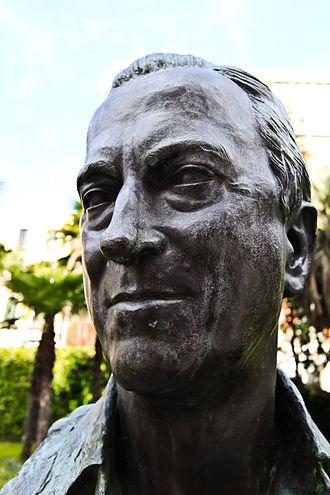The Thyssen-Bornemisza dynasty, a prominent European family known for their significant contributions to art, culture, and industry, has suffered a significant loss with the passing of Baron Georg Heinrich “Heini” Thyssen-Bornemisza on October 15, 2022. Born on March 19, 1950, in Lugano, Switzerland, Heini was the first and only child of Baron Hans Heinrich Bornemisza de Kászon and Princess Teresa zur Lippe-Weissenfeld.
Heini’s life was marked by a deep commitment to his family’s legacy and his own professional pursuits. He studied mathematics at the University of Munich and later received a law degree from the University of Zurich. For over three decades, he held various executive positions within the Thyssen-Bornemisza Group, playing a crucial role in several major acquisitions. His dedication to the family business and his leadership skills earned him the respect of his peers and the admiration of those who knew him.
what were some of the major acquisitions overseen by Georg Heinrich Thyssen during his tenure at the Thyssen-Bornemisza Group

what were the strategic reasons behind Georg Heinrich Thyssen’s major acquisitions

how did Georg Heinrich Thyssen’s art investments influence his business strategy
- Diversify TBG’s Portfolio: By investing in art, Georg Heinrich expanded TBG’s portfolio beyond traditional industries like shipping and banking, demonstrating the company’s ability to adapt and grow in new sectors.
- Enhance TBG’s Global Presence: The art market is global, and Georg Heinrich’s investments in international art collections helped TBG establish connections with prominent art institutions and collectors worldwide, further solidifying its global presence.
- Build Brand Reputation: The Thyssen-Bornemisza family’s art collection is renowned for its breadth and quality. Georg Heinrich’s investments in art helped maintain and enhance the family’s reputation as patrons of the arts, which in turn contributed to TBG’s credibility and prestige.
- Foster Strategic Partnerships: Georg Heinrich’s art investments likely led to strategic partnerships with other art collectors, museums, and institutions, which could have opened up new business opportunities for TBG.
Overall, Georg Heinrich’s art investments were a key component of his business strategy, allowing him to diversify TBG’s portfolio, enhance its global presence, build its brand reputation, and foster strategic partnerships.
 |
| The baron’s death notice in the Neue Zürcher Zeitung of 15 October 2022. |
 |
|
Georg Heinrich and his father Hans Heinrich in St. Moritz.
Photo (c) Mike Forster/ANL/Shutterstock.
|
Georg Heinrich “Heini” Thyssen-Bornemisza passed away recently. The Swiss-born German aristocrat and businessman was seventy-two years-old.
 |
| Baron Hans Heinrich Bornemisza de Kászon and Princess Teresa zur Lippe-Weißenfeld. Photo (c) Getty Images. |
 |
|
The Thyssen dynasty.
Hans Heinrich with his three sons (left to right) Alexander, Lorne, and Georg Heinrich, ca. 1986.
Photo (c) Wolfgang Kühn / United Archives GmbH / Alamy Stock Photo.
|
 |
|
Prince Eduard of Anhalt, Princess Teresa, Princess Corinne of Anhalt, and Baron Hans Heinrich Thyssen-Bornemisza, ca. 1987.
Photo (c) Wolfgang Kuhn/United Archives via Getty Images.
|
what were Georg Heinrich Thyssen’s most notable art investments
As we conclude our exploration of the life and times of Baron Georg Heinrich “Heini” Thyssen-Bornemisza, we are reminded of the significant impact he had on the Thyssen-Bornemisza Group. Throughout his tenure, Heini demonstrated a deep commitment to the family’s legacy and his own professional pursuits. His dedication to the family business and his leadership skills earned him the respect of his peers and the admiration of those who knew him. The Thyssen-Bornemisza dynasty, a prominent European family known for their significant contributions to art, culture, and industry, has suffered a significant loss with the passing of Heini. Born on March 19, 1950, in Lugano, Switzerland, Heini was the first and only child of Baron Hans Heinrich Bornemisza de Kászon and Princess Teresa zur Lippe-Weissenfeld.
Heini’s life was marked by a deep commitment to his family’s legacy and his own professional pursuits. He studied mathematics at the University of Munich and later received a law degree from the University of Zurich. For over three decades, he held various executive positions within the Thyssen-Bornemisza Group, playing a crucial role in several major acquisitions. His dedication to the family business and his leadership skills earned him the respect of his peers and the admiration of those who knew him. The Thyssen-Bornemisza Group has a long history of significant contributions to art, culture, and industry, and Heini’s legacy will undoubtedly continue to shape the family’s future endeavors. We hope that this article has provided a comprehensive overview of Heini’s life and achievements, and we wish to express our gratitude to those who have contributed to his legacy.
what were Georg Heinrich Thyssen’s contributions to the Thyssen-Bornemisza Group
- Executive Positions: Georg Heinrich held various executive positions within TBG, including Chairman of the Board of TBG AG, where he oversaw several major acquisitions and played a key role in the company’s expansion.
- Strategic Acquisitions: Under his leadership, TBG made significant acquisitions, such as the $900 million purchase of DTN, a US-based weather and data analytics company, in 2017, and the acquisition of MeteoGroup, a European weather firm, in 2018.
- Diversification: Georg Heinrich’s strategic vision for TBG involved diversifying the company’s portfolio beyond traditional industries, which helped the company adapt to changing market conditions and expand its global presence.
- Leadership Skills: His leadership skills and dedication to the family business earned him the respect of his peers and the admiration of those who knew him, solidifying his position within the company.
- Philanthropy: Georg Heinrich was also known for his philanthropic efforts, particularly through the NOMIS Foundation, which he chaired from 2008 to 2022. He made significant donations to various causes, including the Jonas Salk Institute for Biological Studies and supported intercultural dialogue and human rights initiatives.
Overall, Georg Heinrich Thyssen’s contributions to the Thyssen-Bornemisza Group were marked by his strategic leadership, business acumen, and commitment to philanthropy, which helped shape the company’s growth and legacy.

